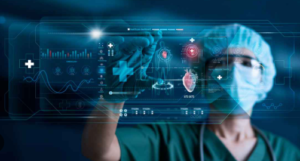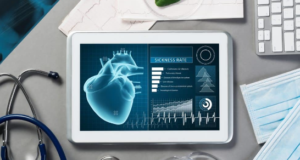
Technology Driving Medical Device Development
Within the field of medical gadgets, one finds an interesting junction of technology, creativity, and medicine. From the stethoscopes of the past to the sophisticated diagnostic tools of today, the development of medical tools has greatly improved our capacity to treat, diagnose, and control many diseases. Examining the most recent developments and how they are revolutionizing healthcare, this paper explores the technology underlay of the creation of these vital tools.
Overview of Medical Equipment
Medical devices are a broad spectrum of tools, machinery, implants, and software applied in diagnosis, monitoring, or treatment of medical diseases. Simple equipment like thermometers to sophisticated systems like robotic surgical platforms abound in these devices. Medical device development uses a multidisciplinary approach incorporating components of engineering, biology, computer science, and regulatory science.
Context in History: Early Innovations
Medical device history provides evidence of human creative ability. Surgeons in ancient times utilized simple instruments including scalpels and forceps. René Laënnec’s discovery of the stethoscope and Wilhelm Conrad Roentgen’s creation of the first X-ray machine marked notable progress in the 19th century. Modern medical tools originated in these developments.
The Contemporary Age
Medical device technology has underwent a significant change in the 20th and 21st centuries. The field has been transformed by the way digital technologies and electronics are combined. Offering hitherto unheard-of degrees of accuracy and efficiency, devices include MRI machines, pacemakers, and wearable health monitors have become indispensable in modern medicine.
Key Technologies Driving Development of Medical Devices Advanced Materials
Development of a medical device depends much on the materials chosen. Thanks to developments in materials science, biocompatible materials that reduce the possibility of negative body reactions have been produced. For implants, for example, polymers and ceramics are frequently used for their longevity and fit with biological tissues.
Intelligent materials
Medical equipment makes more and more use of smart materials that which adapt with the surroundings. Ideal for uses including drug delivery systems or adaptive implants, these materials can alter their characteristics in response to stimuli including temperature, pH, or electric fields.
Miniaturization and Wearable Technology
In medical gadget technology, minaturization has changed everything. Smaller, more effective parts enable the design of wearable and portable technologies. Modern health monitoring capabilities including heart rate variability, sleep tracking, and blood oxygen levels now abound in wearable electronics such smartwatches and fitness trackers.
advantages of minaturization
Small gadgets have various advantages:
Patients can daily utilize them without disturbance.
They offer real-time health metric data under continuous monitoring.
Smaller sensors might produce more exact results.
Machine learning and artificial intelligence:
By allowing more complex data analysis and decision-making methods, artificial intelligence (AI) and machine learning (ML) are revolutionizing medical devices. To support diagnosis and treatment planning, artificial intelligence systems can examine enormous volumes of data from wearable sensors, patient records and medical imaging.
AI Applications in Medical Equipment
By spotting trends in medical photos, artificial intelligence can improve the diagnostic accuracy.
Predictive analytics where historical data allows AI to forecast possible health problems before they start allowance for this.
Personalized Medicine: Based on their distinct health profiles, artificial intelligence aids in customizing therapies to certain individuals.
Automation and Robotics
Because robotic devices enable more exact and least intrusive operations, they have transformed surgical techniques. Reduced risk of complications and faster recovery times follow from increased dexterity and control given by robotic-assisted surgery to surgeons.

Robotic Systems: A Sample
Surgical System by Da Vinci: With minimum invasiveness, this approach lets high-precision operations be possible.
Advanced prosthesis including robotic components provide more control and utility.
Medical Device Development: The Process
R&D, or research and development:
Development of a medical device starts with thorough investigation and design. Identification of medical needs, conceptualizing device design, and feasibility studies constitute components of this phase. Working together, researchers and engineers design prototypes and test them for safety and efficacy.
Research and Development phases: preclinical testing Testing tools for safety and efficacy in laboratory and animal models.
Clinical Trials: Investigating the device’s performance in real-world settings by means of human subjects.
Approval for Regulation
Once a medical device has proved to be safe and effective, it needs to be approved by regulations before it may be sold. Reviewing the clinical trial data and manufacturing techniques of the device ensures it satisfies all necessary criteria by regulatory organizations such the EMA (European Medicines Agency) in Europe and the The U.S. Food and Drug Administration (FDA).
Legal Difficulties
Compliance: Attaching to the strict guidelines established by regulatory bodies.
Documentation: Giving thorough information on production techniques, device safety, and efficacy.
Production and Quality Control
Mass manufacture of medical equipment comes from scaling up from prototypes. Strict adherence to quality control criteria is necessary in this phase to guarantee that every device satisfies performance and safety criteria. Maintaining high quality all through the manufacturing process depends on good manufacturing practices (GMP).
Important Characteristics of Manufacturing Process Validation making sure that regularly produced gadgets satisfy quality criteria come from manufacturing processes.
Regular inspections and testing help to spot and fix any possible problems.
Developing Medical Device Technology Trends
Telemedicine and Distance Monitoring
Particularly in more recent years, telemedicine has become rather popular. By tracking patients’ health data from a distance, remote monitoring devices help healthcare professionals to make quick interventions and thereby lower the demand for in-person visits.
Telemedicine offers healthcare access to underprivileged or rural groups, therefore benefiting them.
Efficiency: Minues hospital readmissions and simplifies the monitoring process.
3D Printing
Custom medical tools and implants are created using 3D printing technology more and more. This technology makes it possible to quickly create patient-specific devices meant for particular anatomical requirements.
Uses of Three-D Printing
Making implants that exactly match a patient’s anatomy is known as custom implmentation.
Rapidly developing and testing fresh gadget ideas is prototyping.
The linked network of medical equipment and applications interacting via the internet is known as the Internet of Medical Things (IoMT). Perfect data interchange and integration made possible by IoMT improves operational efficiency and patient treatment.
IOMT’s advantages
Real-time information: offers instant comments and ongoing observation.
Enhanced coordination helps patients and healthcare providers to interact better.
Difficulties and Thoughts of Action
Privacy and Data Safety
Data security and privacy have become significant issues as digital and linked medical equipment are used more and more. Maintaining confidence and following laws depend on patient data being kept safe from breaches and illegal access.
Social and Ethical Consequences
The fast development of medical technology begs social and ethical concerns as well. We have to take care of issues such the fair sharing of technology, the possibility of technologically driven differences in healthcare access, and the consequences of artificial intelligence in decision-making.
Future Opportunities
Medical device technology has bright future prospects for even more developments. Developments in disciplines such nanotechnology, biotechnology, and quantum computing are probably going to produce discoveries that improve diagnosis accuracy, treatment choices and patient outcomes even further.
Possibilities for Development
Nanomedicine is the focused medication delivery and diagnostics application of nanoparticles.
Printing biological tissues and organs for transplantation and study is known as bioprinting.
Final Thought
Medical device development technology is evidence of human creativity and the continuous search to enhance healthcare. From sophisticated materials and downsizing to artificial intelligence and robots, every technical development gets us closer to more individualized and efficient medical treatment. Looking ahead, constant innovation and multidisciplinary cooperation will be essential to open fresh opportunities and conquering the obstacles ahead.
Understanding and using these technologies will help us to keep developing medical devices, therefore raising the quality of treatment and hence the quality of life for people everywhere.
1 thought on “Revolutionizing Healthcare : The Technology of Medical Device Development”